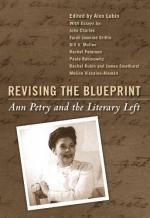|
This section contains 6,149 words (approx. 21 pages at 300 words per page) |

|
SOURCE: “Narrative space in Ann Petry's Country Place,” in Xavier Review, Vol. 16, 1996, pp. 21–35.
In the following essay, Holladay deconstructs the narrative of Country Place, stressing the interdependence of the characters and the illusory nature of their reality.
Although William Faulkner is the author frequently credited with fully rendering the life of an American community, the same may be said of the African-American fiction writer Ann Petry. Petry's detailed portraits of communities are central to The Street (1946), Country Place (1947), The Narrows (1952), and Miss Muriel and Other Stories (1971). Like Faulkner, Petry examines a wide range of individuals and their relationships with each other, and she takes pains to place her examination of race relations in the context of an American community. But while Faulkner returns repeatedly to the intricacies of life in Yoknapatawpha County. Petry moves back and forth between urban, fragmented communities and small, insular ones. Her focus on...
|
This section contains 6,149 words (approx. 21 pages at 300 words per page) |

|


